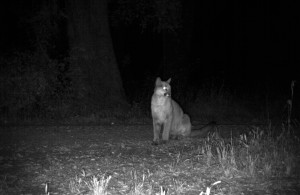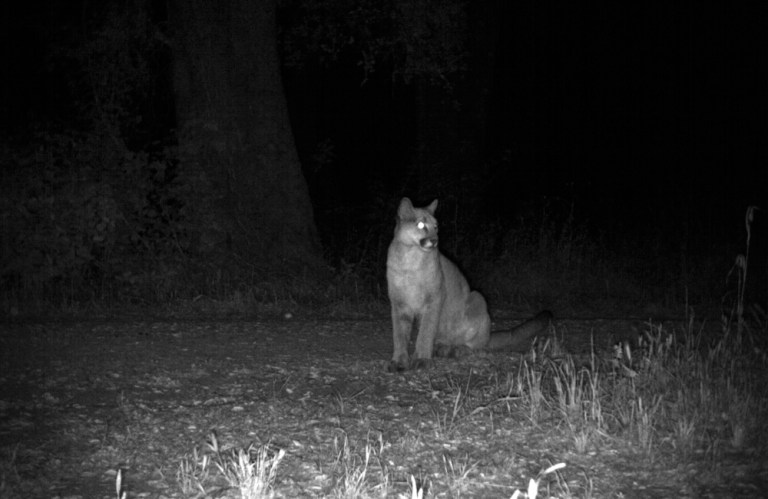
A feeding black-tailed deer stands alert in the distance as a group of students arrive at Jasper Ridge. A Western Bluebird flits across a checkered meadow of yellow and white flowers and disappears into an oak tree by Searsville Lake.
This year marks the 40th anniversary of the Jasper Ridge Biological Preserve. Located in the eastern foothills of the Santa Cruz Mountains seven miles west of Stanford’s main campus, the preserve is home to about 16 species of mammals and 800 species of vascular plants, providing a natural laboratory for researchers from around the world and an open classroom for students and docent-led tourists.
Since the initial designation of the land as a natural preserve by the University’s Board of Trustees in 1973, the Preserve has expanded from 960 acres to 1,189 acres, occupying roughly one seventh of the University’s total acreage. Today, the preserve provides a research environment for some 80 researchers at any point in time, with those researchers conducting work in fields ranging from history to archaeology.
Biodiversity and early history
One aspect of Jasper Ridge’s status as an invaluable resource for researchers is that it provides a protected environment for long-term research with minimal human interference.
Home to some 10 percent of California’s total species, the preserve provides shelter for mammals such as coyotes, mountain lions and a diverse range of flora and fauna such as Chaparral Mallow. Despite apparent mountain lion sightings in recent years, faculty associated with the preserve asserted that there have been no close encounters with the large cats.
“The mountain lions are extremely good at not being seen,” said Chris Field Ph.D. ’81, Jasper Ridge’s faculty director.
However, Jasper Ridge has not always been the tranquil land it is today. Up to five thousand years ago, Jasper Ridge was home to Muwekma-Ohlone, a Native American tribe native to the Bay Area that was driven out in the late 18th century, when Spanish soldiers and missionaries conquered them and took control of the land. In the early 19th century, the arrival of the new immigrants caused the land to suffer from severe grazing.
Between 1892 and 1926, Stanford slowly purchased parcels of the land and designated it for scientific research while the Searsville Lake, located in the central portion of the preserve, continued to be used for recreational purposes. However, by the 1960s, conflicts arose between recreational activities and scientific research, as a group of researchers, including Professor of Biology Paul Ehrlich, petitioned the university to close the reserve to the public.
Between 1973 and 1975, the Board of Trustees finally decided to designate Jasper Ridge as a biological preserve and made the area off-limits to casual visitors.
“Jasper Ridge is unique because it’s well protected,” Field said. “It has extremely diverse ecosystem and it’s well understood so it can be made as a model system.”
Research and education
Several factors have served to distinguish Jasper Ridge from the other biological reserves around California as a natural destination for researchers, with many Stanford researchers describing its proximity to the main campus as one of its greatest assets.
“Most field stations are far away from campus which makes it harder for student participation or even for young researchers to participate because of travel,” said Cindy Wilber, Jasper Ridge education coordinator, who has worked there for 19 years. “So we are quite fortunate that the field station is so accessible physically for members of the campus community.”
So far, 165 dissertations and theses have involved research at the Preserve. Since 1965, 335 published works have reported research there.
According to Tadashi Fukami, an assistant professor of biology, some researchers are attracted by the rich legacy of previous research that has been conducted in the Preserve.
“There are many research projects going on [at Jasper Ridge],” Fukami said. “Many of them are biological, including some work that was done long time ago by professors here on the plants and insects that we use for class. So there is a lot of background information that other people have collected in the past that we can make use of.”
Another highlight of the preserve is its comprehensive research and educational facilities. The Leslie Shao-ming Sun Field Station, completed in 2002, is a 9,800 square foot research and education complex with near-zero net energy consumption. In 2003, the building was awarded the first Sustainable San Mateo County Green Building Award.
“They have very good field stations, classrooms and benches that we can use for the class,” Fukami added.
Since the opening of Sun Field Station, at least 37 Stanford courses, seven non-Stanford courses, 36 Stanford-affiliated organizations and 40 non-Stanford organizations have been able to take advantage of the preserve to create research and classroom experiences.
For example, BIO 44Y, one of the biology major’s core laboratory classes, involves students in Fukami’s current research on the nectar of the Mimulus flowers that scatter the land.
According to research by the biology department, students who were engaged in this field-based way of learning through the class became “more interested in continuing basic science research.”
“I always have a good time talking to the students in the field,” Fukami said. “I find it much easier to talk about biology with students there rather than in the lab.”
